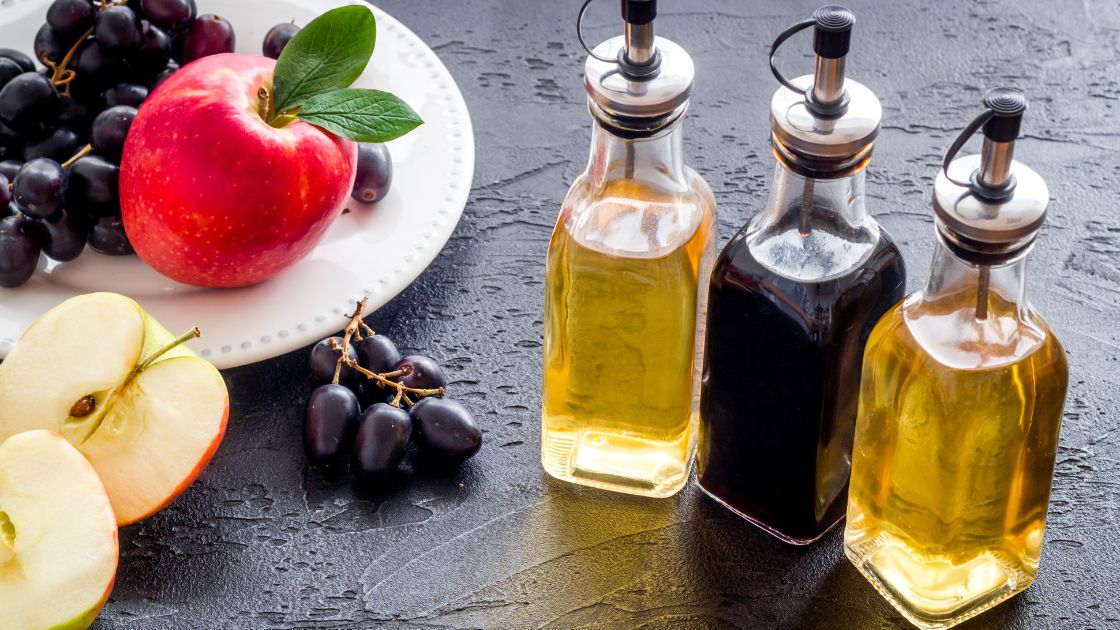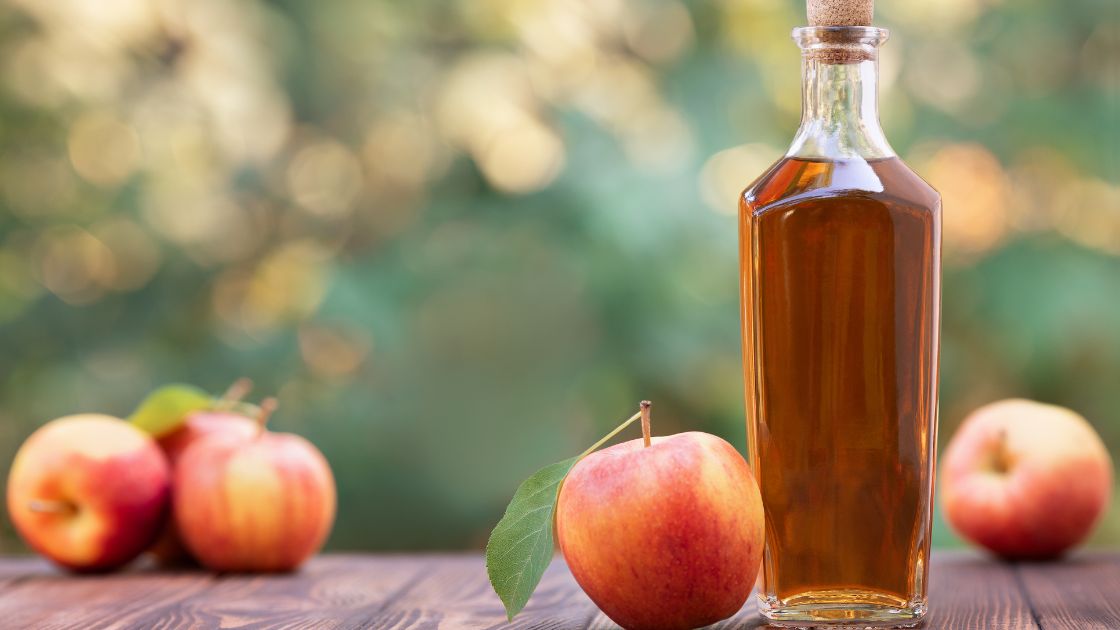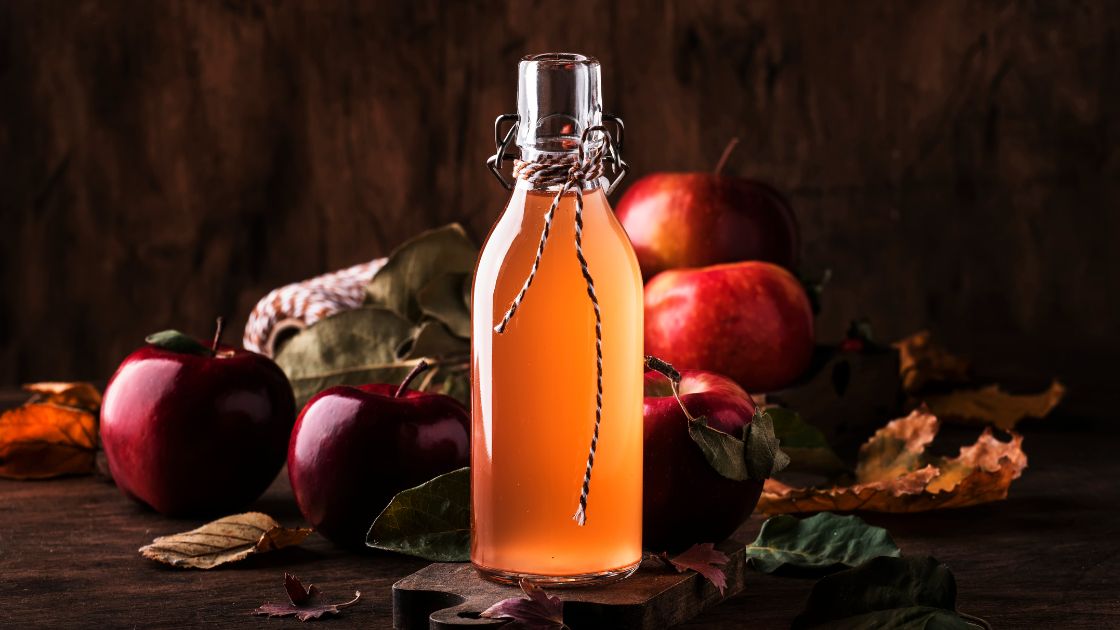
Raw, Unfiltered & Unpasteurized | Aids In Weight Management | Supports Skin Health | Boosts Metabolism

2x Mother | Skin, Hair & Gut Health | 100% Ayurvedic & Natural | Aids In Weight Management | Boosts Metabolism
Vinegar is a sour liquid used to add flavour and acidity to foods. Two popular types you may have heard of are balsamic vinegar and apple cider vinegar. Though both are made of vinegar, they actually have some key differences in how they are made, their taste and thickness, and how they can be used in cooking or even for health purposes.
While they may substitute for one another in some recipes depending on personal taste preferences, balsamic and apple cider vinegar really shines in certain foods and applications. Knowing their distinct qualities makes choosing and using them easier, whether making a pan sauce or a morning health tonic.
Apple cider vinegar (ACV)
Apple cider vinegar is the same as what it sounds like - vinegar made from apple cider. Apples are crushed up and combined with yeast, which starts converting the natural sugars in the apples into alcohol. Then bacteria are added, which further ferments the alcohol and turns it into acetic acid, which gives vinegar its sour taste. After letting that whole process unfold, the final product tastes and smells like the apples it came from while packing a puckery punch. Apple cider vinegar contains good-for-you stuff like acetic acid, probiotics, and polyphenols.
Flavour profile and characteristics
Apple cider vinegar has a unique taste that's both sour and sweet, like biting into a tart granny smith apple. It's pretty strong when you first taste it and makes your mouth water. But then, you start to notice a slightly sweet, fruity flavour. It smells a bit like apples, too, and sometimes you can pick up a hint of the wooden barrels it's stored in. This strong sour taste becomes softer when you cook it, letting its fruity flavours blend well with other ingredients.
Culinary uses
Apple cider vinegar is very versatile in cooking. Its bright, acidic flavour pairs well with rich, fatty ingredients like pork, chicken, and hearty greens. Some common uses include:
- Salad dressings
- Sauces like barbecue sauce, hot sauce, and mustard sauce
- Pickled vegetables like onions, carrots, and radishes
- Adding brightness and acidity to soups, stews, chillies, and braised meats
- Baking ingredients in cakes, muffins, and sweet breads
In addition to cooking, apple cider vinegar is often mixed with water as a health tonic and is used as part of cleansing protocols.
Benefits of apple cider vinegar
The nutrients in apple cider vinegar may help:
1. Improves insulin sensitivity and blood sugar regulation
The acetic acid in apple cider vinegar improves insulin sensitivity. This helps regulate blood sugar levels by improving the body's ability to use insulin efficiently. Besides this, vinegar can slow stomach emptying and prevent unhealthy blood sugar spikes after meals. This makes apple cider vinegar helpful for managing diabetes.
2. Lowers cholesterol and promotes heart health
Some research suggests that acetic acid and antioxidant compounds like chlorogenic acid in apple cider vinegar can help lower LDL (bad) cholesterol. Reducing these significant risk factors may support better heart health and lower odds of atherosclerosis over time.
3. Boosts digestion by enhancing stomach acid
The acetic acid in apple cider vinegar mimics the acidity level of stomach acid. This can support better digestion by activating digestive enzymes and juices needed to break down food fully. For those with low stomach acid, like older adults, ACV with meals can alleviate issues like bloating and reflux when food isn't properly broken down.
4. Supports healthy blood pressure
Research indicates vinegar ingestion stimulates an enzyme called ACE, which helps prevent a hormone called angiotensin from narrowing blood vessels. The more relaxed blood vessels lower high blood pressure, reducing strain on the heart. The potassium in apple cider vinegar also counteracts sodium's effects in lowering blood pressure.
5. Aids nutrient absorption and gut health
The pectin fibre and probiotics from the fermentation process in apple cider vinegar support a healthy gut, improving food breakdown and nutrient absorption. Polyphenols like chlorogenic acid also reduce gut inflammation and promote the growth of beneficial bacteria. This combination optimises digestion and enables us to absorb more disease-fighting vitamins and minerals.
Also, read:
What is balsamic vinegar?
Balsamic vinegar comes from a particular white grape in Modena, Italy. It's made by concentrating the grape juice and then slowly fermenting it. This method creates a thick, sweet, and rich vinegar. This isn't your ordinary vinegar; balsamic is a labour of love that brings a gourmet touch to salads, marinades, and desserts. Its unique taste can elevate simple ingredients into something extraordinary.
Flavour profile and characteristics
Balsamic vinegar has a dark brown colour and a rich, sweet, and tangy flavour. It tastes of dried fruit like figs and plums, with notes of spice and aged wood from the barrels. The taste gets richer and deeper as it ages, with hints of sweet molasses and classic balsamic flavours. The texture is glossy, thick, and smooth.
Culinary uses
Balsamic's sweet and sour flavour makes it perfect for drizzling over fresh fruits, cheeses, and ice cream. The richness pairs beautifully with leafy greens, roasted vegetables, grilled meats, and seafood. Common uses include:
- Salad dressings, dips, and marinades
- Glazing meat, fruit, or vegetables
- Adding depth of flavour to pasta sauces, risottos, and grains
- Mixing into beverages like lemonade and cocktails
- Baked fruit desserts like crisps, galettes, and fruit tarts
Good quality traditional balsamic is ideal for finishing dishes, rather than cooking, due to the high cost and delicate flavour that can break down from heat.
Benefits of balsamic vinegar
Balsamic is low in nutrients, but the antioxidants from the concentrated grape juice may offer some benefits:
1. Containing polyphenols that protect cells from damage
Balsamic is made from grape must, which contains polyphenols - compounds that act as antioxidants in the body. These polyphenols protect cells from oxidative damage and inflammation. Specific polyphenols found in balsamic, like quercetin and gallic acid, display potent antioxidant effects.
2. Supporting healthy blood sugar and cholesterol
Polyphenols in balsamic vinegar can inhibit enzymes that digest carbs and lower blood sugar response. Acetic acid may improve insulin sensitivity as well. Moreover, animal research also indicates balsamic could help lower LDL and total cholesterol.
3. Providing antimicrobial effects that support immunity
Polyphenols have antimicrobial properties, inhibiting the growth of bacteria and fungi. This antimicrobial activity supports gut and immune health.
4. Promoting digestive health
Acetic acid can stimulate the production of gastric juices to support better digestion. Its antioxidant and anti-inflammatory effects also protect the gastrointestinal tract lining.
Keep in mind that the sugar content is higher in balsamic vinegar than in apple cider vinegar or white wine vinegar.
Balsamic vinegar vs apple cider vinegar
|
Feature |
Balsamic Vinegar |
Apple Cider Vinegar |
|
Origin |
Modena, Italy |
Various, widely produced |
|
Base Ingredient |
Grape must (freshly crushed grape juice) |
Crushed apples fermented into cider |
|
Colour |
Dark brown |
Pale to medium amber |
|
Taste |
Sweet, complex, with woody notes |
Tart, fruity |
|
Acidity Level |
Generally, around 6% |
Typically 5-6% |
|
Production Process |
Aged in wooden barrels for months to years |
Fermented apple cider turned into vinegar, shorter ageing process |
In-depth explanation of the differences
1. Origin
- Balsamic Vinegar: Traditionally comes from Modena, Italy. It has a protected designation of origin (PDO) status, which means true balsamic vinegar can only come from this region.
- Apple Cider Vinegar: Its production is not tied to a specific region and is made worldwide. It is produced by fermenting apple cider until it becomes vinegar.
2. Base Ingredient
- Balsamic Vinegar: Made from freshly crushed grape juice with all the skins, seeds, and stems. This base contributes to its complex flavour and dark colour.
- Apple Cider Vinegar: It is produced from fermented apple juice. The apples are crushed, and the juice is extracted and then fermented. The apple base gives it a distinct fruity taste.
3. Colour
- Balsamic Vinegar: The prolonged ageing process of wooden barrels contributes to its rich, dark brown colour. The colour can indicate the vinegar's age, with older balsamic being almost black.
- Apple Cider Vinegar: The colour varies from pale to medium amber, depending on the apple variety and the fermentation process.
4. Taste
- Balsamic Vinegar: Known for its sweet, complex flavour with hints of wood due to ageing in wooden barrels. Its taste can also vary based on the ageing period, with older vinegar being thicker and sweeter.
- Apple Cider Vinegar: It has a noticeably tart and fruity flavour, which reflects its apple base. The taste can be more or less intense depending on the fermentation length and the apple varieties used.
5. Acidity Level
- Balsamic Vinegar and Apple Cider Vinegar: Both vinegars have similar acidity levels, typically ranging from 5% to 6%. This acidity is what gives vinegar its sour taste and preservative qualities.
6. Production Process
- Balsamic Vinegar: It requires a lengthy ageing process in barrels, ranging from a few months to many years. This process contributes to its unique flavour and premium price.
- Apple Cider Vinegar: It involves fermenting apple cider into vinegar, which is a quicker process. Ageing is not typically a significant factor in its production, making it more readily available and affordable.
Do also check:
- Filtered vs Unfiltered Apple Cider Vinegar
- Apple Cider Vinegar vs Rice Vinegar
- Brown Rice Vinegar vs ACV
Conclusion
Ultimately, balsamic and apple cider bring unique flavour qualities and health benefits to the table. Apple cider makes an excellent all-purpose cooking vinegar with its bright acidity and affordability. A high-quality, thick, aged balsamic vinegar can beautifully finish a dish as a sauce or dressing. Vinegar is a versatile ingredient, so experiment with these two varieties to enhance vegetable dishes, greens, proteins, baked goods, and more.





